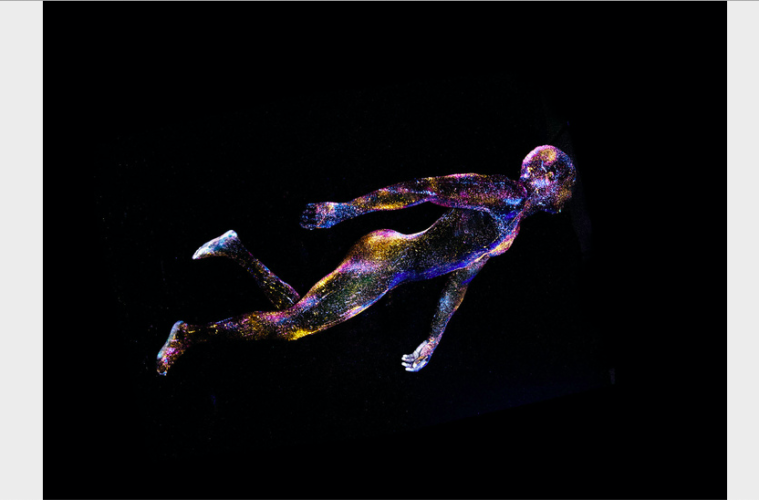As the nation and the world begins to commemorate the unhappy anniversaries of first cases, lockdown orders, and personal loss, the pandemic may finally be beginning to end. From the earliest days, the arts community has remained essential – pivoting to more virtual or otherwise distanced models, creating new models for engaging with culture, keeping us sane and as interconnected as possible, promoting profound contemplations, rising to challenges, facing urgent social and political issues without fear, and helping light a path, if not back to normal, then forward to a new normal.
Art in the Plague Year is an online exhibition organized by UC Riverside’s California Museum of Photography, curated by Douglas McCulloh, Nikolay Maslov, and Rita Sobreiro Souther, and featuring photographs, videos, drawings, audio pieces, and multi-media art by 55 artists from around the world. Divided into eight themes – Body, Nature, Absence, Presence, Ritual, Encounters, Dystopia, and Justice – this landmark show ironically will never be physically staged, but will nevertheless live forever in the internet space. This seems only fitting, as in its very presentation platform it recalls the virtuality of the majority of 2020’s experiences. Like many of the year’s most impressive exhibitions, it includes a great deal of video, sound art, VR space, website-based projects, and other multimedia formats which enliven the online viewing experience.
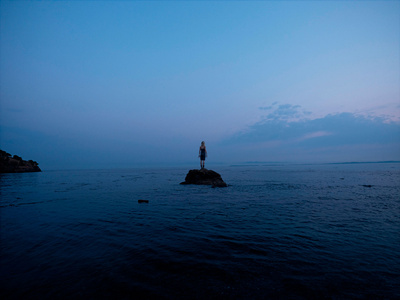
Bootsy Holler in Art in the Plague Year (UCR California Museum of Photography)
Across the exhibition, we encounter the familiar continuum of jostling emotions, as artists take unflinching looks at the multiplicity of crises which unfolded, like their works, in layers. Other voices turn to poetry and magic to make sense of it and center personal and shared humanity in narratives of hopefulness and salvation. We see nature as both a nurturing and a nihilistic force, violence as a perpetual and pernicious dynamic, mutual aid as a possible antidote, dreams and fantasy as a way of processing trauma, humor as a coping mechanism, and our friends and family making life worth living.
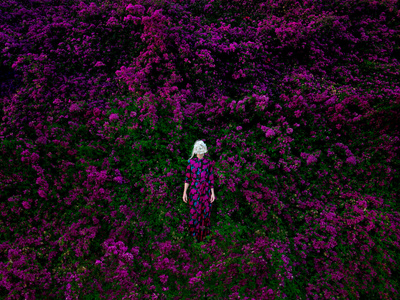
Bootsy Holler in Art in the Plague Year (UCR California Museum of Photography)
L.A.-based Bootsy Holler staged and photographed epic returns to nature, bringing their body into intimate contact with natural environments. So many of us found solace in nature during the pandemic, seeking out a sense of connectedness to something greater than ourselves, something eternal of which we are all a part, and these images celebrate and recall that comfort. Pittsburgh-based Mikael Owunna’s Infinite Essence series creates ethereal portraits, hand-painting the bodies of his Black models in a way that generates fluorescent, cosmic, starlight-inflected images that transmute the specter of death into a spectacle of soul, light, color, and infinite peace.
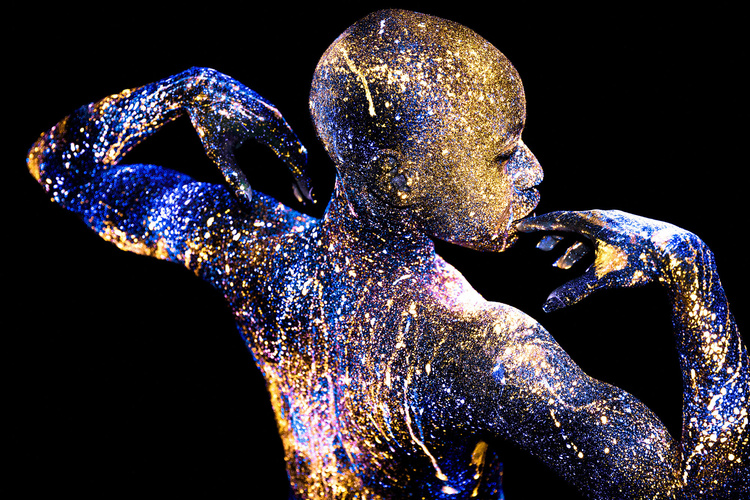
Mikael Owunna in Art in the Plague Year (UCR California Museum of Photography)
My Mother’s Titanium Hip (Video, sound, 6:36 min) by Jill Miller (Berkeley) is an enacted mediation on the intrusions of technology and isolation into experiences of loss and mourning. Losing her mother during the pandemic, Miller presents the instability of technologically mediated experiences, as trauma and losses mount and the world turns into a surreal kaleidoscope of glitches and fragments and reality becomes increasingly difficult to define and pin down. Stefano Morrone (Mexico City) is also concerned with our individual and collective mental health, and his eccentric street portraits give form to the confusion.
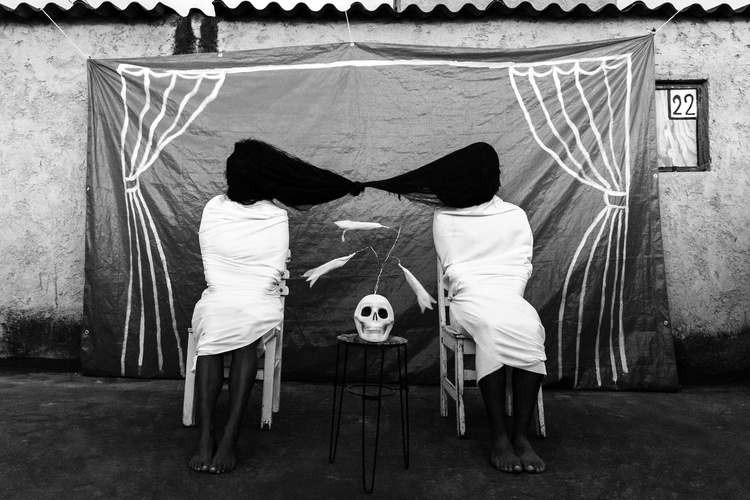
Stefano Morrone in Art in the Plague Year (UCR CA Museum of Photography)
Nature photographer Kiliii Yüyan (Seattle/circumpolar Arctic) presents images from the in-progress project Thin Places which examines a less comforting and more terrifying, though no less majestic, view of the earth. Focusing on what seemed like a sort of uprising, as nature both abandoned and emboldened by our absence, “rose up to assert itself.” Wildfires, climate change accelerations, and the virus itself expose the fragility of the natural world, and its power to disrupt human endeavor.
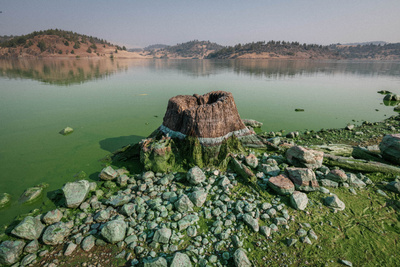
Kiliii Yuyan in Art in the Plague Year (UCR California Museum of Photography)
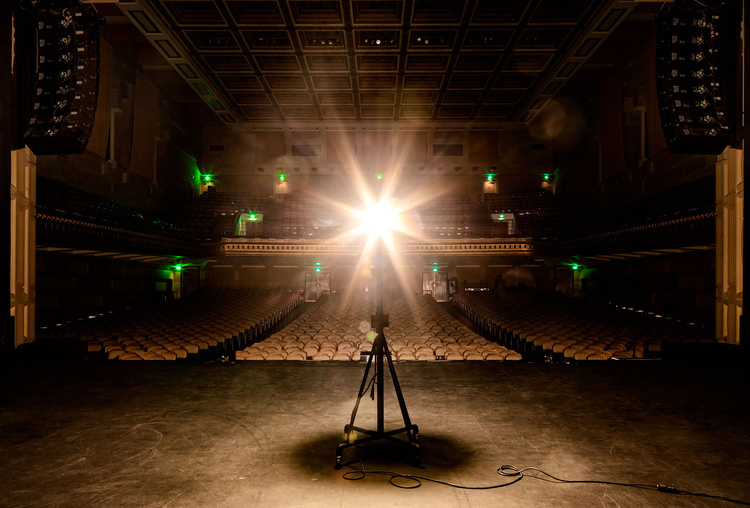
Sara Jane Boyers in Art in the Plague Year (UCR CA Museum of Photography)
Sara Jane Boyers (Santa Monica) presents haunting photographs of empty theaters illuminated only by what is called a “ghost light” – a theater tradition in which when vacant, a single light is left on, often on the stage itself, within the empty space. Jody Zellen (L.A.) offers Ghost City, Avenue S – a pandemic-inspired addition to her existing Ghost City website. A new neighborhood within an imaginative hybridized space, consisting of images, rollovers, animations, and hundreds of unique webpages, this exercise in personal worldbuilding both responds to and in the imagination ameliorates the condition of shared isolation. Qianwen Hu (Berlin) made the webzine Another Day to bring together and honor the scattered community of friends and their daily experiences. With more than 600 contributions from Auckland, Beijing, New York, Ottawa, Paris, Seattle, Shanghai, Shenzhen, Tel Aviv, Toronto, Winnipeg, Wuhan, and more, her book “uses day-to-day life as the means to knit together a fractured world.”
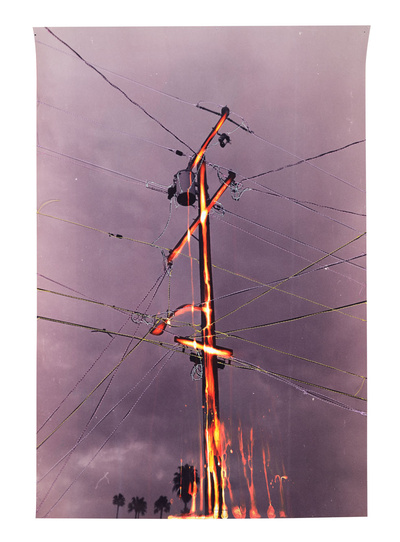
Andrew K. Thompson in Art in the Plague Year (UCR California Museum of Photography)
Tyler Stallings (Huntington Beach) took a more wry approach to the trials of daily life, with the short film Three Disasters in a Stairwell (Video, sound, 43 sec.) warning that disasters do in fact lurk everywhere at all times. Andrew K. Thompson (Colton, CA) offers works from his ongoing Chemical Landscapes – Scarring Land & Time series, begun early in the quarantine experience, and honoring the physical threats of apocalyptic social and climate upheaval in photo-based works which are torn, punctured, sewn together, and stained in embodied images of the destruction in which we are all complicit. Peter Wu+/EPOCH Gallery (L.A.) founded the VR site epoch.gallery as an artist-run exhibition space that not only harnessed the necessity of web-based culture but in its curations directly address themes of dystopia, entropy, and struggle.
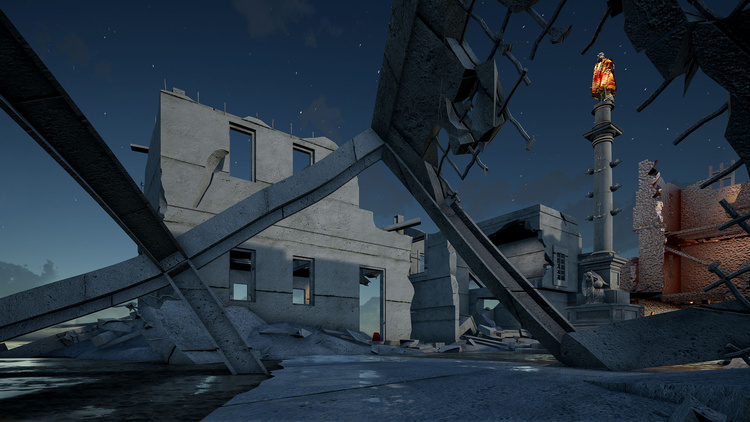
EPOCH Gallery in Art in the Plague Year (UCR CA Museum of Photography)
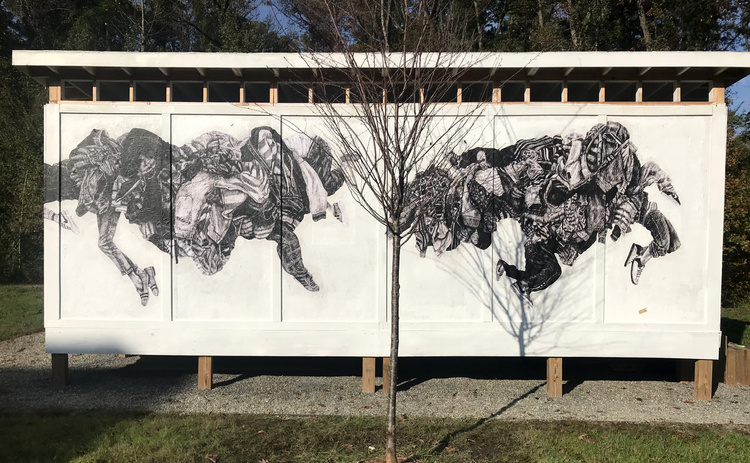
antoine williams in Art in the Plague Year (UCR CA Museum of Photography)
Othered Suns by antoine williams (North Carolina) is a 14-minute sound installation that affectingly collages audio fragments including found sounds and dialogue from Isabel Wilkerson’s The Warmth of Other Suns (from which the piece derives its title), No Longer Human by Osamu Dazai and williams’ own The Black Fusionist Society Manifesto. Positing the Black body as being in a centuries-long, still constant state of change, migration, and seeking – a condition with implications for radical distress across physical, emotional, and generation space and time – the piece unforgettably enacts shelter and exile, collapsing history into the present with the intention of creating a more conscious, loving future with a foundation in the righteous promise of safety.
Explore the full exhibition now at artintheplagueyear.com.
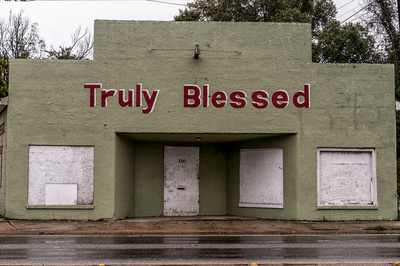
Mark Indig in Art in the Plague Year (UCR California Museum of Photography)
Advertising disclosure: We may receive compensation for some of the links in our stories. Thank you for supporting LA Weekly and our advertisers.

